I am sure you have seen many versions of Butterick 6453 around this summer. This is my first version the design, and I have already completed another.
Having worn this dress (quite a few times already, I might add), I can see why so many people are making multiple versions of their own.
I also decided it would be a nice touch to add a bit of piping to the waist seam. One length of yarn and a bit of bias fabric later, and I had my self-fabric piping prepared.
I ended up using the full width of my fabric (minus the selvedge) for the skirt which was slightly larger than the pattern piece. In a lighter weight fabric, this would have been fine, but my mid-weight quilting cotton had to be man-handled to scrunch all that fabric down to match the bodice.
I really do like the added fullness in the skirt, so I suppose the extra work fighting with gathers was worth it in the end.
And I am also very pleased how the added piping turned out.
I decided to fully line the bodice, but I used the facing pieces as my interfacing pattern piece.
Each time I grab a solid colored fabric from the drawer and there are only scraps left, I get frustrated. Why do I keep this stuff?!? This time around, those small pieces came in handy, which is going to make it difficult to get rid of all of those tiny bits and bobs.
The upper edge of the lining pieces were pick-stitched. I have gotten in the habit of doing this step by hand and I really prefer the look to the machine stitched version (big surprise, I know!).
I also eliminated the adjustable portion of the straps that makes them look like bra straps. I suppose this is a helpful feature in a store bought garment because of the adjustability, but it ends up looking tacky, in my opinion, and definitely not necessary when you are making a dress for a specific body.
The seams were finished with rayon seam binding, and the hem was catch-stitched in place.
And while it was not really necessary, I added a waist stay. I have yards and yards of this yellow grosgrain that was purchased for a specific project and I ended up not using it. The color rarely works with anything I make, so I decided to go for a bit of high contrast here and use some of the stuff.
This pattern turned out a bit roomier than expected in the bodice for my standard size 12, but the dress has been worn more than any other garment this season, so I am going to call this one a complete success!

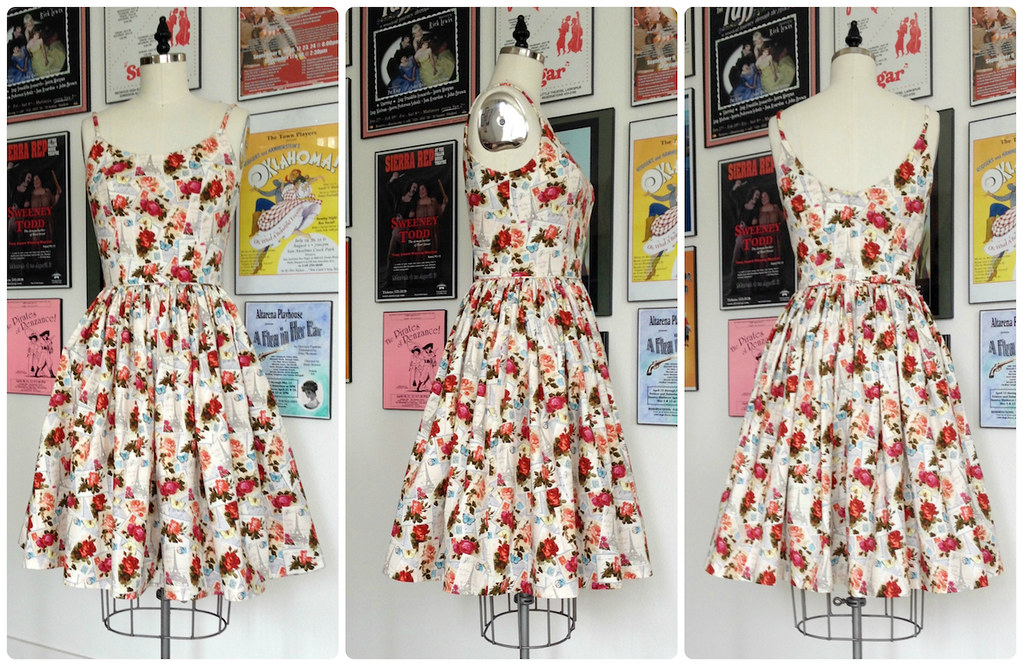
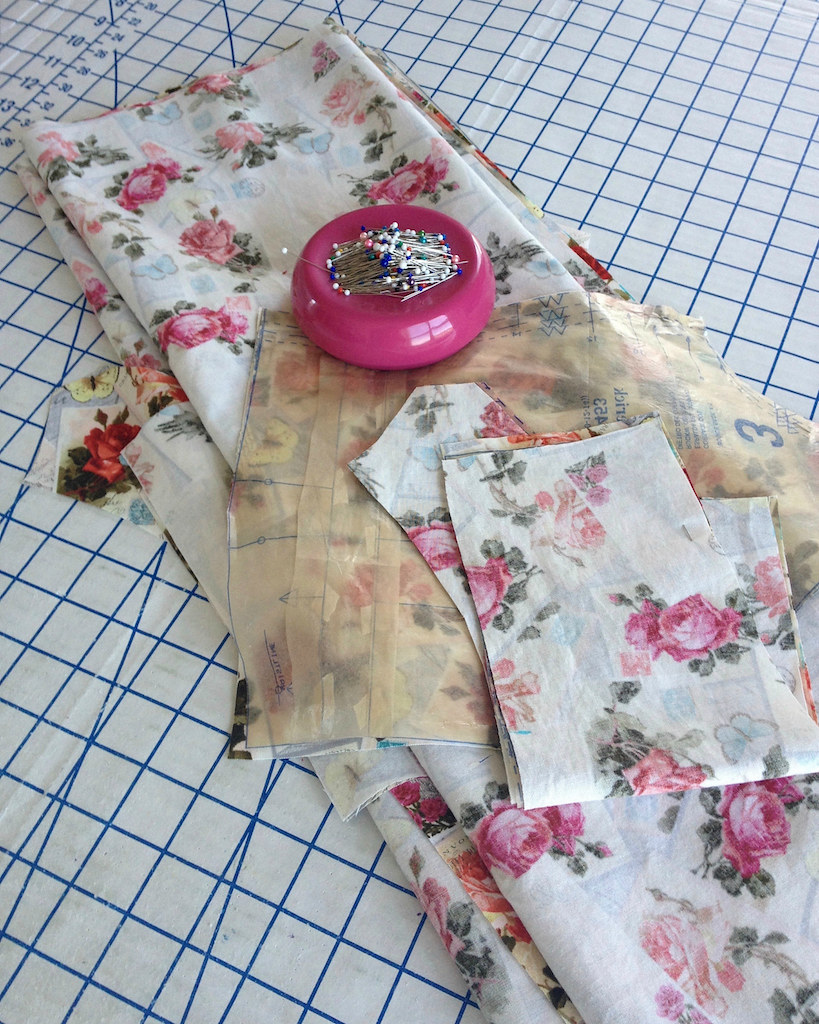
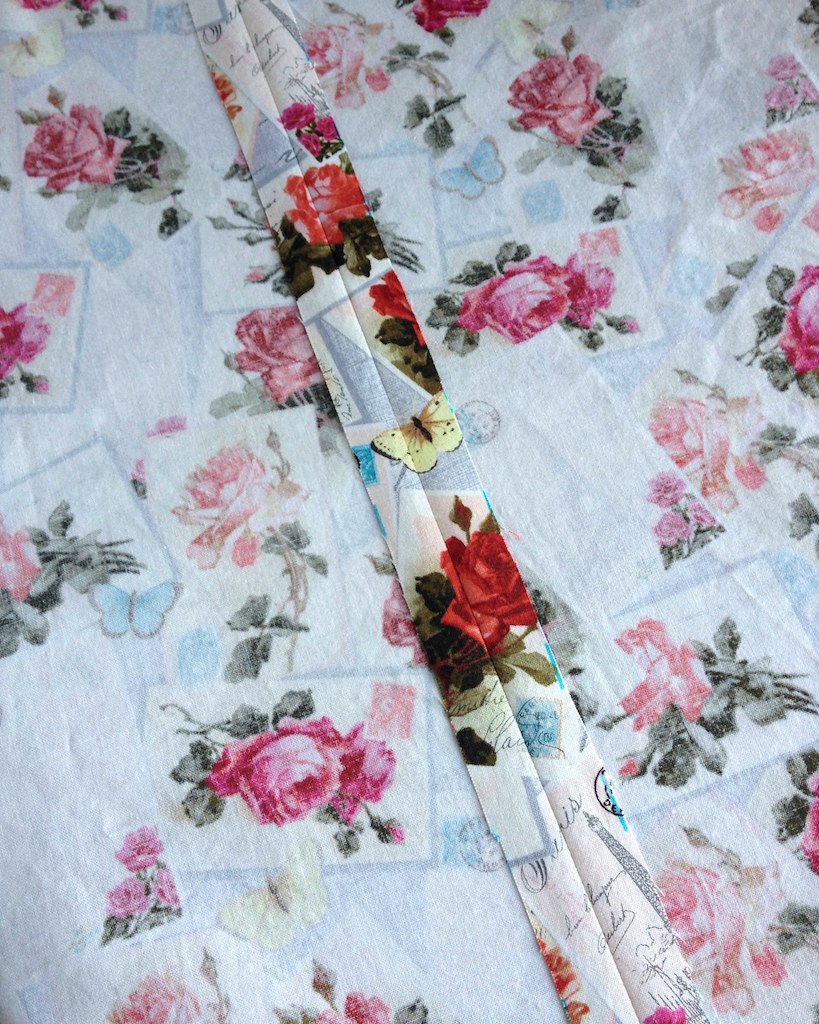

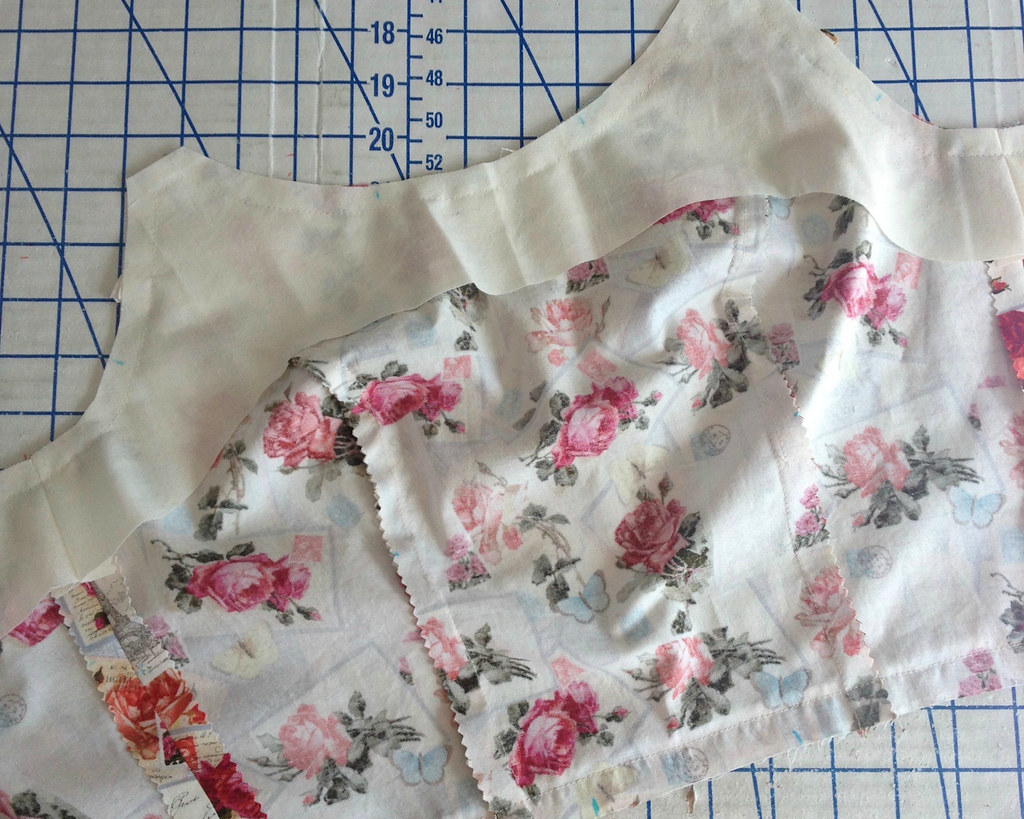

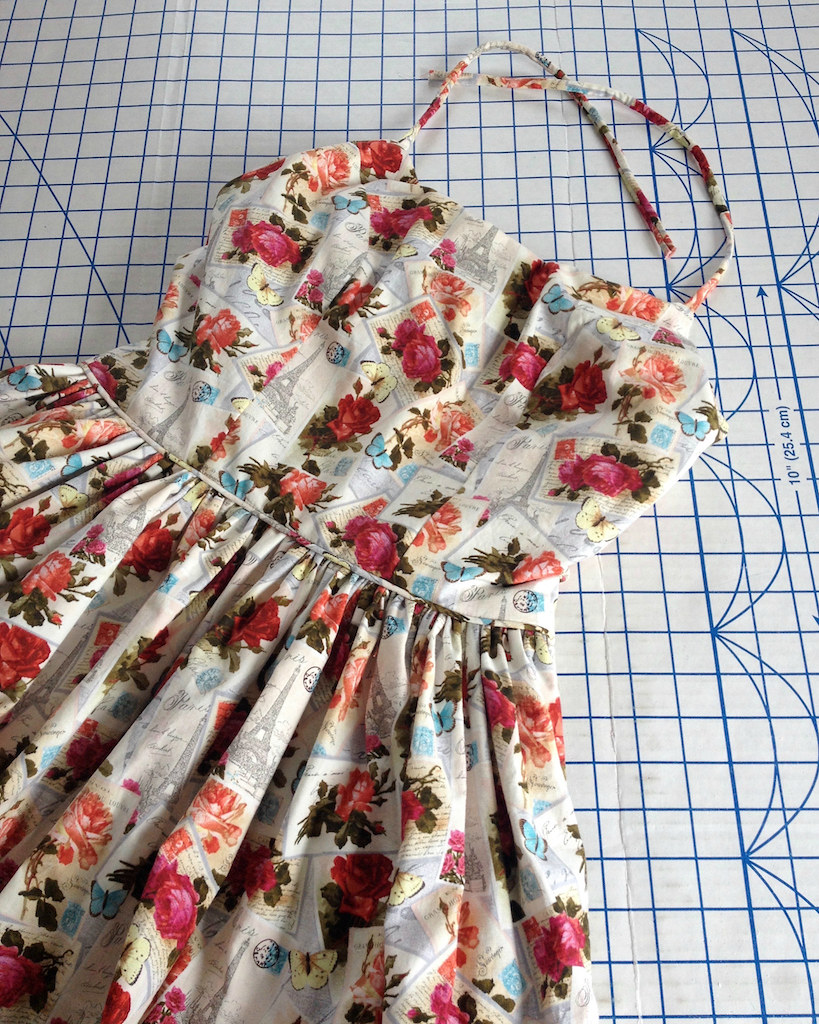

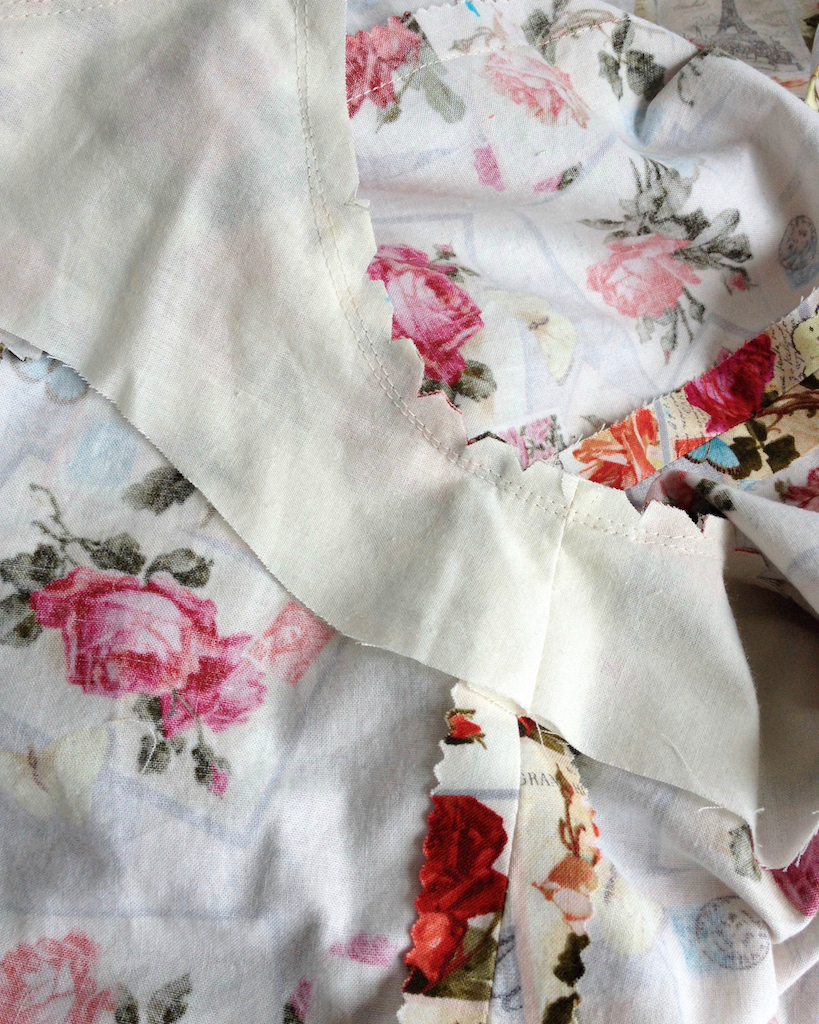
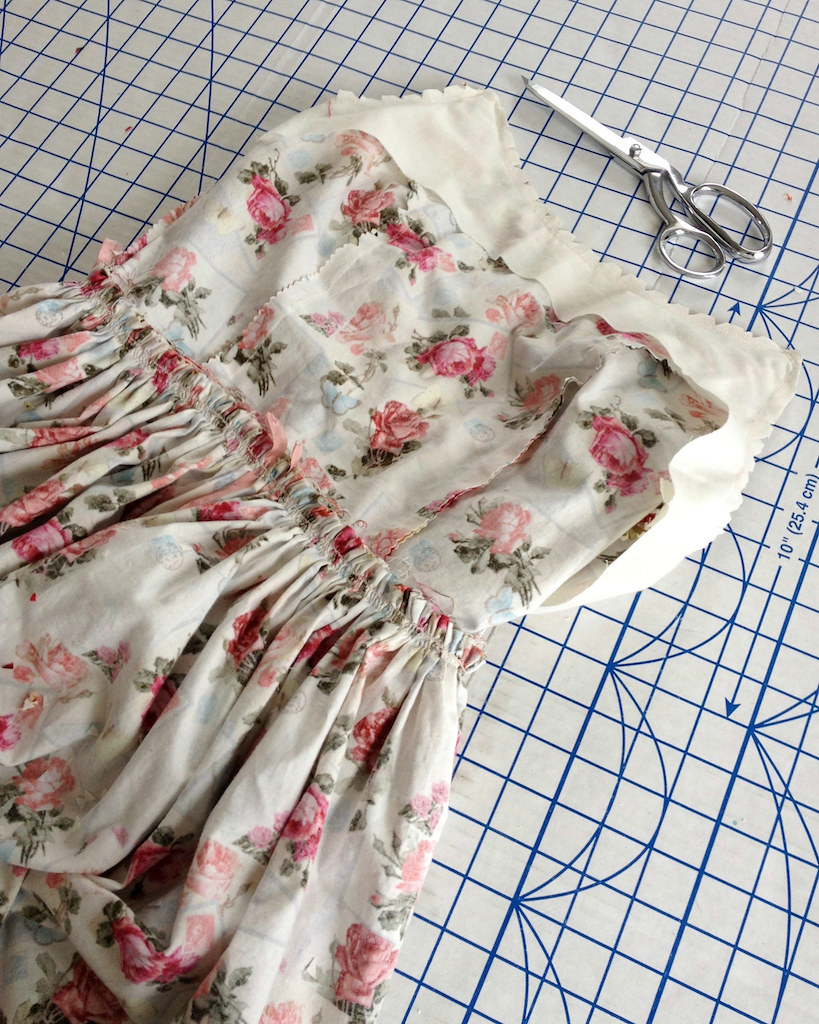
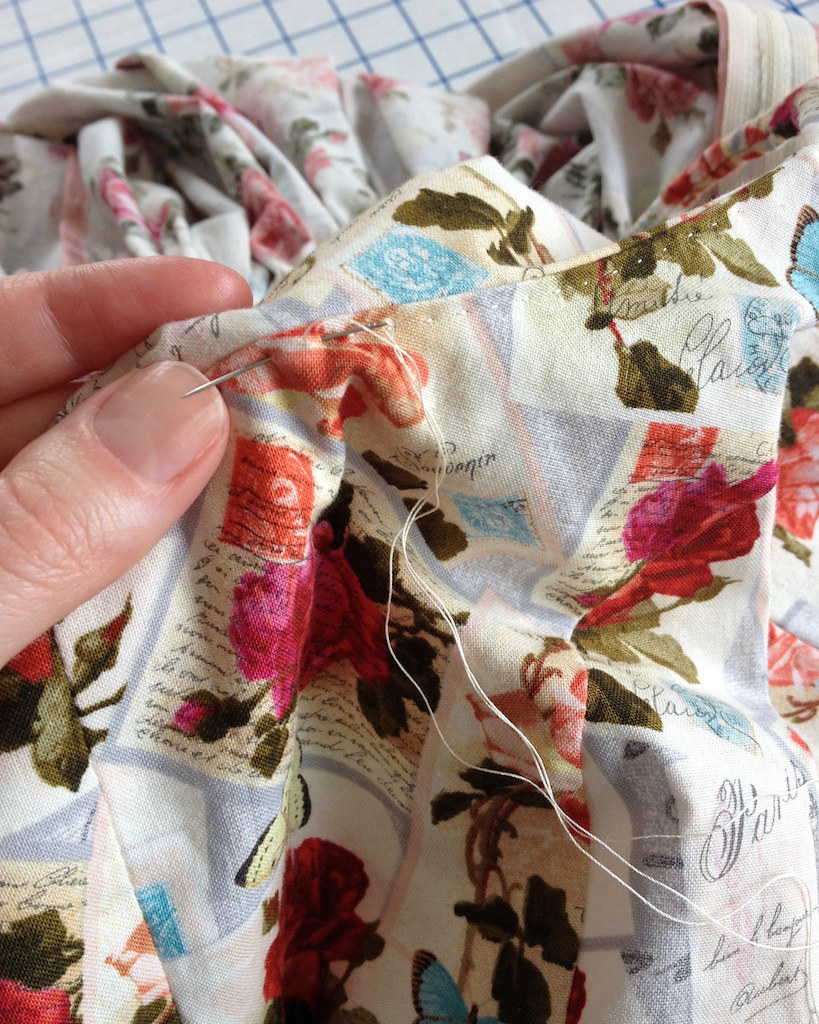
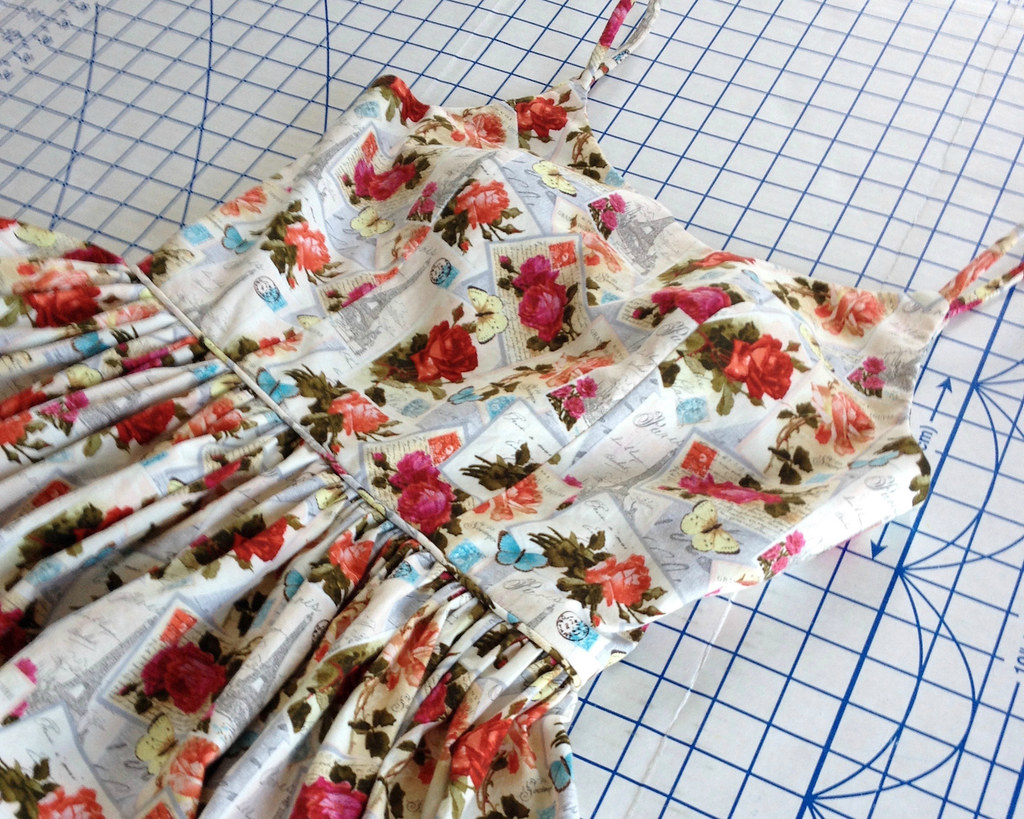
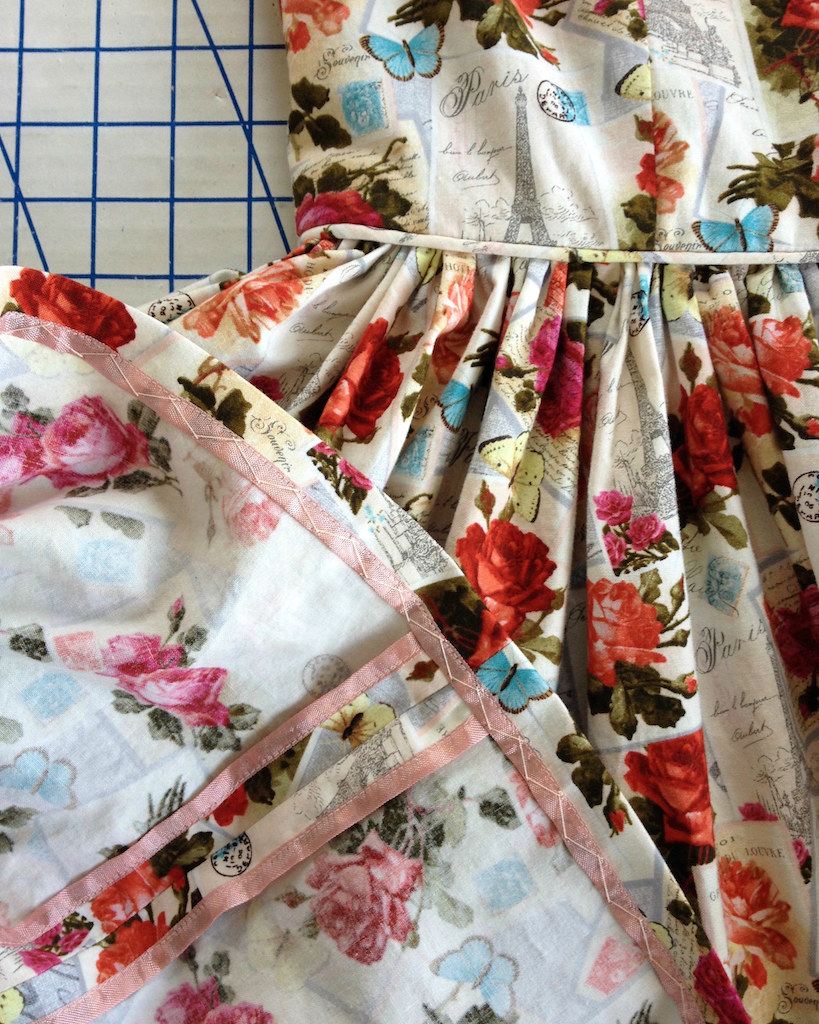

Gorgeous result. Your attention to detail, as always, has resulted in a highly polished result!
ReplyDeleteLovely dress and beautiful construction. I always pick stitch my zips but I like the look of what you did with the lining. I am not quite sure from the photo what it replaced. Was it understitching?
ReplyDeleteYes, it's the understitching - I think I get a better result with hand stitching rather than trying to shove an almost complete garment through the machine.
DeleteSuch pretty insides! I just happen to be thinking of trying out some of these techniques on my current dress. Pick stitching and a faux waist stay (seam binding stitched just inside the waist seam ;o)
ReplyDeleteThe insides of your makes are always so inspiring!
ReplyDeletewow, its perfect
ReplyDeleteI adore how much effort goes into every item you make! And that waist piping is amazing - it really gives the gathering such a finished edge!
ReplyDeleteMy mother gathered the waist of skirts and dresses she made for me 4 times the waistband measurement. They were much prettier than the store bought clothes that were gathered twice the waistband measurement on cotton and voile dresses. I like that you lined the top with the same fabric and added piping and a waist stay.
ReplyDeleteMy mother gathered the waist of skirts and dresses she made for me 4 times the waistband measurement. They were much prettier than the store bought clothes that were gathered twice the waistband measurement on cotton and voile dresses. I like that you lined the top with the same fabric and added piping and a waist stay.
ReplyDeleteThis dress is gorgeous. I love the fabric as well. Impeccable workmanship as always!
ReplyDeleteI've made a lot of folk dancing skirts where the skirt is 6 or more yards. It's cartridge pleating at that point. And the grosgrain stay helps make that lump of fabric easier to finish and more durable.
ReplyDeleteI never quite understood the logic of this until I finally saw them in action: at that circumference, the skirts open up and rise as the dancers twirl. It's really impressive onstage.